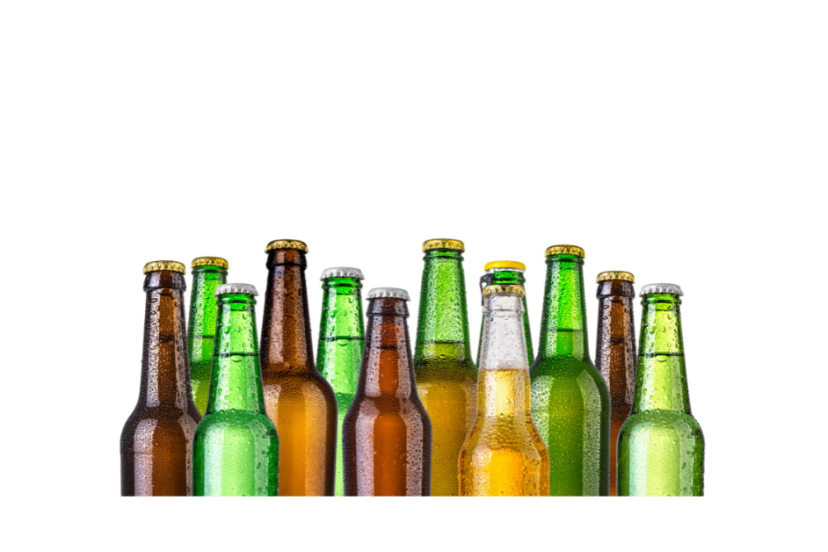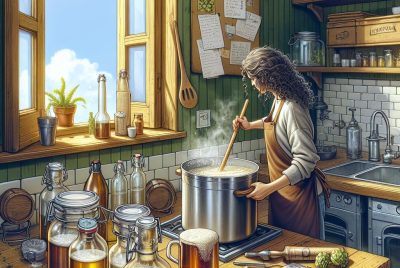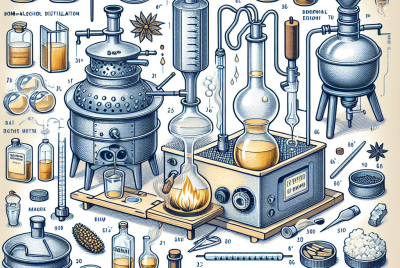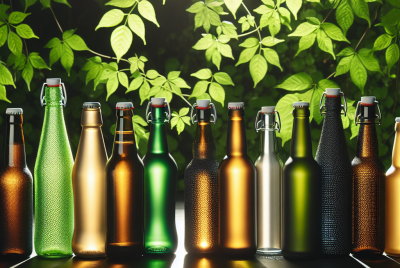Beer Bottles – Art, Science or Both?
The Art and Science of Beer Bottles
To some, beer bottles might seem a mere afterthought. But for us home brewers, they’re an integral part of the process, a vessel that can make or break the final product. If you’re new to brewing you may not have given much thought yet to what bottles you will use, or even be aware of the differences each type of bottle can make to your end product, so let’s dive right in and examine them!
Introduction to Beer Bottles
Beer bottles are as diverse as the brews they hold. Understanding their nuances is key to choosing the right bottle for your home brew. Different materials, even different colors of beer bottle can all have an effect on your brew.
Beer Bottle Materials: Beyond Glass
When we think of beer bottles, glass often comes to mind. But let’s venture beyond glass and look at other materials: aluminum and plastic (PET).
Aluminum Beer Bottles
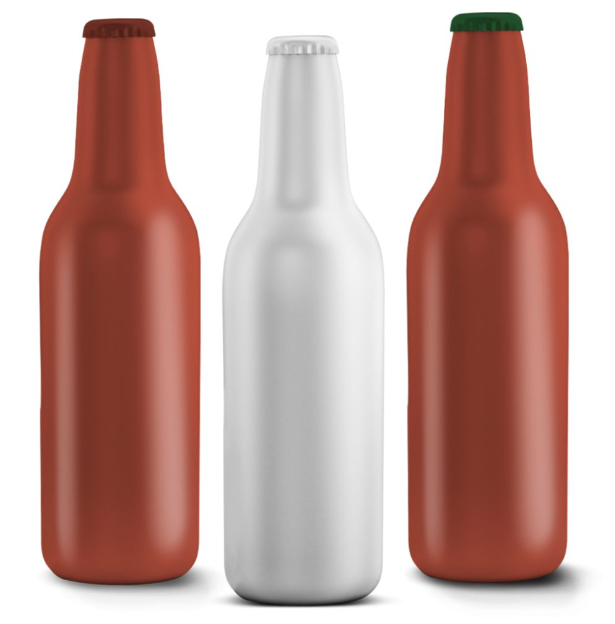
Aluminum bottles are a modern twist in the beer bottling world. They’re lightweight, unbreakable, and excellent at cooling beer quickly. Aluminum also blocks out all light, providing the best protection against UV rays. However, they’re generally more expensive than glass bottles. Some people also believe that aluminum imparts a metallic taste, although this is largely subjective and varies from person to person.
Plastic (PET) Beer Bottles

PET bottles are another option for home brewers. Plastic bottles are lightweight, unbreakable, and cheap, making them a popular choice for casual settings and outdoor activities. They’re not as UV-resistant as colored glass or aluminum bottles, though. Over time, they may allow oxygen to seep in, which can spoil the beer. They also don’t have the same aesthetic appeal as glass or aluminum.
Glass Beer Bottle Colors: The Spectrum of Taste
The color of your glass beer bottle can really impact the quality of your beer. While different color beer bottles may look more pleasing to the eye, there are practical differences with each color. Let’s look at the pros and cons of each.
Clear Glass Bottles

Clear bottles may be visually appealing, but are they the best choice for your brew?
Pros: Clear bottles showcase the beer’s color beautifully.
Cons: However, they offer no protection against light, which can lead to “skunky” off-flavors.
Brown Beer Bottles

Amber or brown glass bottles are the workhorse of the home brewing world, and one of the most popular choices.
Pros: They offer excellent protection against harmful UV light, helping maintain the beer’s taste.
Cons: They don’t allow the beer’s color to shine through like clear bottles.
Green Beer Bottles

Green beer bottles are a middle-ground choice in terms of light protection compared to brown and clear ones.
Pros: They offer a modicum of UV protection and a unique, traditional aesthetic.
Cons: They’re not as protective as amber bottles, but still better than clear bottles.
Blue Beer Bottles

Blue glass bottles are less common but still a viable option for bottling beer.
Pros: They offer similar UV protection as green bottles and provide a unique look.
Cons: Like green bottles, they’re not as effective as amber in protecting against UV light.
Specialty Beer Bottles: A World of Options
There’s a fascinating world of specialty beer bottles out there, each with their own unique set of benefits and drawbacks.
Swing Top Bottles

Swing tops, with their attached reusable stopper, like many of the examples above, offer an old-world charm. Think Grolsch.
Pros: Swing top bottles are easy to seal and unseal, making them a convenient choice. The stoppers can be used repeatedly, saving costs over time. They also offer a certain rustic aesthetic appeal.
Cons: The initial investment is higher than standard capped bottles. Additionally, the rubber gaskets that form the seal need to be inspected and replaced regularly to prevent leaks.
Growlers

A growler is essentially a large jug used to store and transport beer.
Pros: Growlers allow you to store a larger quantity of beer, making them great for sharing. They’re typically made of brown glass, providing good UV protection.
Cons: Once a growler is opened, the beer should be consumed quickly to avoid losing carbonation and freshness. They’re also heavier and more cumbersome to handle than standard bottles.
Stubby Bottles

Stubby bottles, shorter and wider than traditional beer bottles, offer a point of difference in your beer presentation.
Pros: Their unique shape can differentiate your beer from others. Being compact, they’re easier to store in small fridges or coolers.
Cons: Stubby bottles can be harder to find, and their unusual shape might not fit standard capping equipment, potentially requiring additional investment.
Conclusion: Choosing Your Ideal Beer Bottles
As you can see, there’s an incredible variety of beer bottles out there for bottling your home brew. While the perfect bottle depends on your unique needs and taste, understanding the ins and outs of each type helps ensure your beer is stored in the best possible vessel. If you build up a collection of different types of bottle, you can compare the taste of your brew from each one and then see which suits that particular brew best for the next run.
FAQs
- Does the beer bottle material affect the beer’s taste?
Yes, the material can affect the taste. Glass and aluminum offer the best protection against UV light, which can degrade beer. Plastic bottles may allow oxygen to seep in over time, potentially altering the beer’s flavor. - Which beer bottle color offers the best UV protection?
Amber glass bottles offer the most UV protection among glass bottles, and aluminum bottles block out all UV light. - Can you reuse all types of beer bottles?
Yes, as long as they’re thoroughly cleaned and sanitized. However, the sealing mechanisms of certain specialty bottles (like swing tops) may need to be replaced over time. - Are there any unique beer bottle shapes I could consider for my home brew?
Yes, beyond the traditional cylinder, there are stubby bottles, Belgian beer bottles, and even growlers for larger quantities. - What’s the best beer bottle for outdoor activities?
Plastic (PET) or aluminum bottles would be the most practical for outdoor activities due to their light weight and unbreakable nature.
Happy brewing, and remember: the journey to a perfect beer doesn’t end once the brewing is done. The right bottle can make all the difference!

